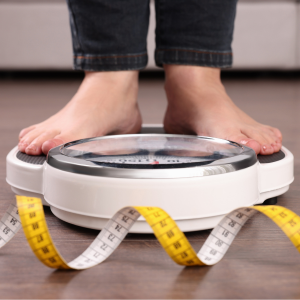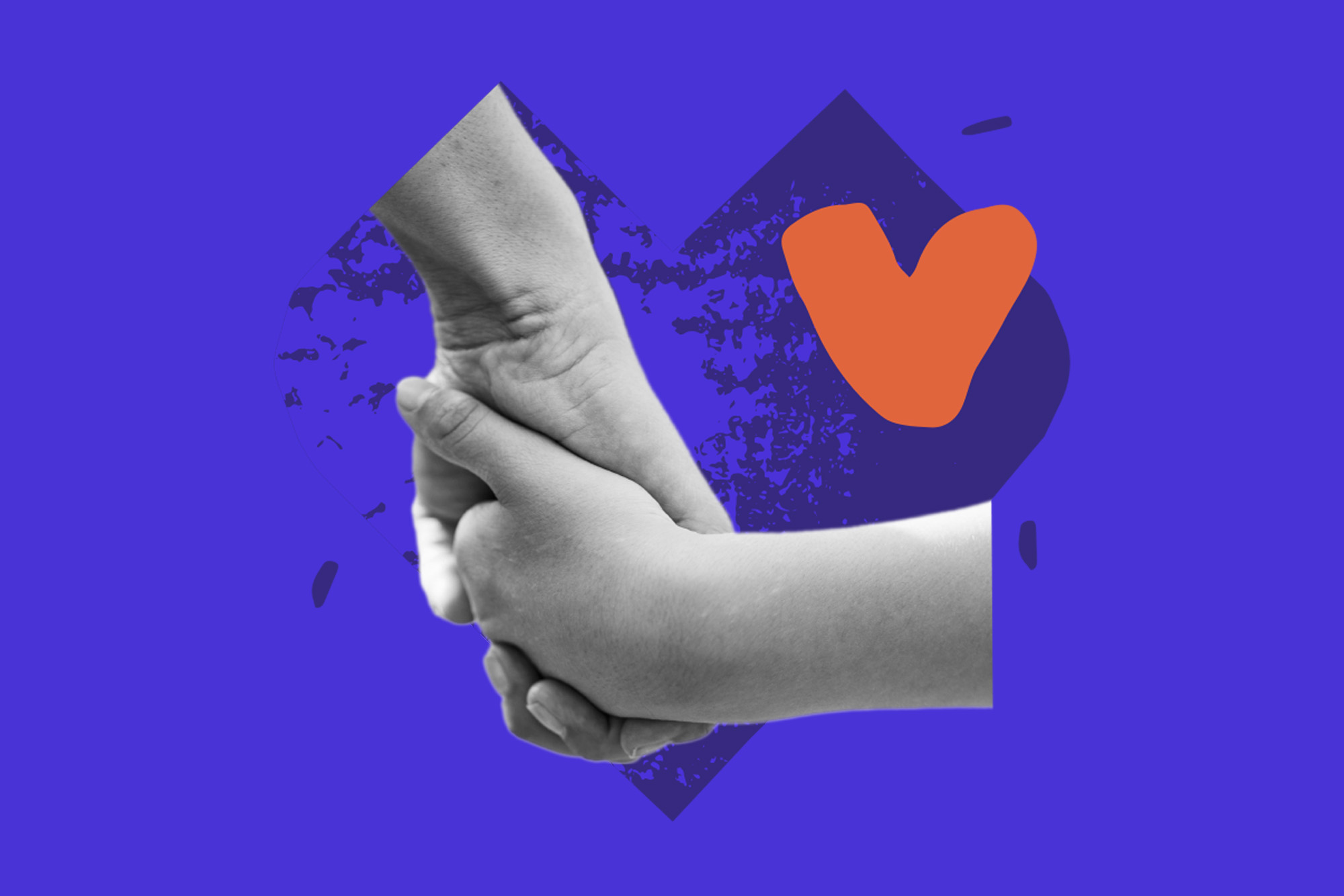
Elie:
When I was 15 years old, I was hospitalized for my eating disorder (ED). I was diagnosed at a trip to the doctor’s office: an appointment I had made not because I had become a shard of my former spastic, goofy self, nor because I had about the same amount of energy as my grandpa (who had just finished chemotherapy), but because I had a sore throat. At the appointment, my doctor discovered that my heartbeat had fallen dangerously low.
The peculiarity of my case was that, according to the Body Mass Index (BMI), I was a “normal weight.” In fact, I was at a healthier weight than I had been at my last annual check-up, where my BMI – which had always been on the upper end of the healthy range but was then teetering on the verge of “overweight” – had prompted my doctor to recommend more frequent exercise and a “bit more moderation” in my diet.
So, I took up running and began restricting my diet. The results grew apparent, to myself and others, and we liked what we saw. For the first time, I felt fit, thin, and desirable. So, I cranked up the heat: Run more, eat less, repeat. Gradually, over the course of the next year, I did what I thought I had always wanted to do: I brought my BMI to the bottom of the “normal” range.
I had known for a while that how I was feeling was not normal. I no longer enjoyed spending time with my friends, jogging, or playing music. My brain constantly felt like it was working at 0.5 speed. Climbing a staircase made me feel dizzy. I had felt this way for months, yet each time I entered my height and weight into the BMI calculator on my phone, the screen reassured me that I was “normal.” I was fine. But I was angry. If I was normal and healthy, why did I feel so diminished? I had always assumed that, with enough willpower, I could have it all: A balanced diet, energy to do the things I loved, and a thin, “healthy” body. No one ever told me I would have to sacrifice the first two in order to achieve the third.
And why did the diagnosis take so long? My own ED-specialized therapist never referred to me as “having an eating disorder,” but rather “at risk for an eating disorder,” or “demonstrating disordered behaviors.” The Diagnostic and Statistical Manual of Mental Disorders (DSM) – the manual most experts use to diagnose eating disorders – cites one necessary criterion for Anorexia Nervosa as, “Restriction of energy intake leading to a significantly low body weight [BMI] in the context of age, sex, developmental trajectory, and physical health.” I simply did not meet the numerical criteria.
It took bradycardia – that aforementioned dangerously low heart rate – for me to accept that I was not in fact fine. In February of my sophomore year of high school, I was sent to the hospital, and there I finally received a name for the challenge I had been facing: anorexia. This diagnosis was instrumental in my recovery. It meant that I could no longer approach my disorder with ambiguity and avoidance. It was the first step in my long and ongoing journey of healing.
After hours of discussion with therapists, nutritionists, and friends who have also battled eating disorders, I have come to the tentative conclusion that the root of an eating disorder lies in the shameful space of “I am not ___ enough.” It is a fill-in-the-blank situation: I am not intelligent enough, I am not accomplished enough, I am not loved enough. These not-enoughs often feel out of our control. The problem of an imperfect body, at least, seems solvable. Thus, body manipulation becomes a temporary prescription for an incurable case of not-enoughness, and soon we’re addicted.
Eating disorders love concrete milestones
And therein lies the problem with using “significantly low body weight,” among other physical indicators, as essential criteria for eating disorders: how can you expect to deconstruct a mindset that thrives on numerical validation by creating a series of quantifiable criteria for qualification? What happens when a person with anorexia is told that they do not “technically meet the qualifications for anorexia?” The blank “I am not ___ enough” takes on a newly perverted shape: “I’m not sick enough, therefore I am not worthy of help.”
This should not ever be the case. Eating disorders are psychological illnesses that can affect anyone in any body. Validation of illness and access to treatment should not rely upon a number on the scale, but a thorough, individual analysis of one’s relationship with food and their body. It is time for this to become the standard. It is time for system reform.
Carolina:
Sophomore year of high school, I watched my best friend turn from the most fun, lively person I know into a lifeless robot, who lost a concerning amount of weight and ate close to nothing. I watched as her eating disorder therapist declared that, according to the DSM, she was not under the BMI needed to get an anorexia diagnosis. This idea that a larger, or even a straight-sized, body could not be starving or struggling mentally disgusted me. Months later, I watched as Elie was only diagnosed after being admitted to the hospital. Anger built up inside of me for a system I saw as broken. Why did she have to be physically ill in order to get a mental health diagnosis?
I brought my frustrations to the dietitians I interned with this past summer and was troubled to learn that her story was far from uncommon. I saw an opportunity for change but lacked the expertise, so I interviewed around forty eating disorder professionals (names listed in the appendix) about their thoughts and experiences surrounding the DSM.
They all said the same thing. Mental disorders, specifically eating disorders, rarely fit into the neat, categorical boxes that the DSM has created. Oftentimes, this categorizing places unwarranted emphasis on the physical, visible manifestations of the mental illness, rather than on the illness itself and its accompanying emotions, thoughts, and subjective experiences.
This method of diagnosis is dangerous for six major reasons:
One: Most obviously, if the criteria are lacking to diagnose an ED, then clinicians (who often use the DSM to diagnose) will not treat the illness.
Two: The longer eating disorders progress, the more complicated they become, so when people get treated early, they have much higher recovery rates. Currently, “The diagnostic criteria do not catch people until they have had an ED for a while and physical problems are coming up” (Megan TaylorPhD, MSW, LCSW, CEDS). The psychological illness can progress significantly before visible manifestations begin to appear.
Three: Giving a name to an eating disorder can make people feel validated and deserving of help. As Elie elaborated upon above, eating disorders will often attempt to convince the sufferer that their struggle is invalid. The “I am not sick enough to seek help” trope is a sadly common one. Diagnosis can be a necessary validation for individuals to accept and confront their struggles.
Four: Because the DSM criteria inform insurance companies’ coverage for eating disorder recovery treatment, many do not receive the financial help they need without the DSM-approved diagnosis.
Five: The DSM criteria influence research, and research shapes how EDs are treated. The more that people of certain demographics are left out of research, the more eating disorder treatment is going to be targeted toward a specific group of people or type of eating disorder.
Six: The DSM’s technical definition of an ED will affect public perception of the disorder. The more people are able to understand the variety and complexity of eating disorders, the more people will be able to recognize if they themselves or those around them have one and are more likely to reach out for help.
To be clear, what Elie had was included in the DSM. However, she did not fit under the “anorexia” category due to her BMI. Within the “Other Specified Feeding or Eating Disorder” section, there is “atypical anorexia,” meaning that one fits the criteria for anorexia, minus the BMI requirement. Interestingly, “atypical” anorexia is more common than “typical” anorexia; however, anorexia is seen as more typical because the media tends to portray those with eating disorders in emaciated bodies. The fact that the “other” category exceeds “typical” anorexia is a sign that the anorexia diagnosis is not an effective one. Interviewee Erin Harrop, LICSW, PhD completed a dissertation showing that people with atypical anorexia, while having lower rates of loss of menstruation and bone density compared to anorexics, were just as likely as anorexic patients to have “life-threatening medical complications.” This “other” section creates a hierarchy of eating disorders, and people in these categories tend to fly under the radar and are not taken as seriously or seen as real. Because those in the “atypical” anorexia category are not visibly emaciated, doctors and other professionals do not typically screen them for eating disorders. Even if people do receive the “atypical” diagnosis, it can be invalidating and often makes people feel like they have to be “better” at their eating disorder or that they are not quite “sick enough” to get treatment.
Not only does BMI’s creation of the “other” category cause many to be left undiagnosed, but many professionals doubt that BMI is a helpful criterion at all. The Body Mass Index was invented by a mathematician in the 1800s to measure population trends in white males; it was never meant to be interpreted for individual health outcomes. Despite the BMI having become a central health metric in the United States, there has never been research to show that BMI is a good way to measure eating disorders (Annetta Ramsay). Far too often people assume that when someone is anything other than the emaciated stereotype that has become widely associated with eating disorders, their body cannot be starving. When people lose weight intentionally, no matter their size, that lost weight includes muscle. Considering the heart is a muscle, this weight loss can put anyone in vital danger.
A first glance or a single statistic can never paint the full picture.
As interviewee Tara Gorstein put it: “Bodies change differently based on genetics and experiences, so by looking at someone, you have no clue what they are going through.” Many of the other professionals also mentioned that they have had SO many clients that “look” healthy but are not. The rigid boundaries of the BMI cannot begin to represent the vast range of genetics, statures, diets, and mental experiences.
The exclusionary nature of the BMI also erases the possibility of a difference in desired body types, and sidelines eating disorders that aim to achieve a body type beyond the thin, white Western ideal. For example, the anorexia diagnosis requires an “intense fear of gaining weight or of becoming fat,” insinuating that every single person wants to look super thin. This requirement does not include men who want to be bulky, women who want to look “thick,” or people of different cultural backgrounds who have different body ideals.
It was thinking about the range of “ideal” bodies and the means people undergo to achieve these bodies that led me to ask each professional I interviewed: “What even is an eating disorder?” “Whew. This is quite the question,” began interviewee Niki Dubois in her response. Practically all of the interviewees stumbled on this seemingly simple question. They could see for themselves that the DSM criteria were not capturing everyone with an ED, and they knew more about eating disorders than almost anyone, yet they were still not able to describe exactly what an ED was.
If they can’t describe it, then how is the DSM supposed to define and diagnose the disorder in a couple of paragraphs? Interviewees Virginia Newman, Courtney Simons, Amanda Diede, Annetta Ramsay, Alex McKee, Allie Weiser, Erin Harrop, Erin Decker, Judy Krasna, and Niki DuBois all stated that EDs lie on a spectrum. There is not one specific point at which your mental state surrounding your relationship to food and your body gets so bad that you have an eating disorder. Newman and Weiser also talked about how a super harsh cut-off can leave people out. Patients can exhibit severely disordered behavior, but remain just one factor away from a diagnosis: a difference of binging/purging one more time, eating one more calorie, or describing one’s mental state as 1% worse can determine having an ED. Allowing the eating disorder criteria to mimic the substance use disorder criteria – which uses a spectrum in the DSM – might help solve this issue, but many professionals also noted the risk of the scale approach: establishing a system where some can say they have a “worse” ED than someone else could lead to competition.
Another message resonated throughout my interviews: there is no simple fix. Every potential solution comes with associated risks. Mental illnesses cannot be properly explained by a series of checkboxes, so shifting towards a more thorough and subjective diagnostic system would be beneficial. However, our medical model also relies on efficiency. The more time a doctor spends with a patient, the fewer patients they can see in a day. In theory, the DSM criteria should be broadened to include more people. However, in expanding the criteria we do not want to begin over-diagnosing either. We acknowledge that the diagnostic criteria may never be perfect, but there is still room to move in a positive direction. The DSM has taken some steps, like removing the amenorrhea (loss of menstruation) requirement for anorexia diagnosis; now men and others who do not have a period can be diagnosed. However, the current DSM still causes harm through the erasure of many individuals with EDs.
Here are a few suggestions on where to begin:
- Remove a universal BMI requirement and desire for a specifically thin body from the anorexia criteria. Replace with a more personalized model, focusing on changes in individual eating/exercise patterns in order to achieve a particular body type.
- Combine typical and atypical anorexia categories in the DSM.
- Remove the “other” category (including atypical anorexia, bulimia of low frequency and/or limited duration, binge-eating disorder of low frequency and/or limited duration, purging disorder, and night eating syndrome) from the DSM, recognizing each as an individual disorder.
- Explore the possibility of implementing a spectrum, similar to the Substance Use Disorder diagnostic.
Quantitative data – for its simplicity and efficiency – takes precedence over qualitative data in our medical system, but the importance of qualitative data is often undermined. When diagnostic criteria rely too heavily on oversimplified and under-representative statistics, those whose experiences deviate from the perceived “norm” tend to get pushed to the margins of research and medical treatment. Statistics can be incredibly important, but people are not data points. Eating disorders are complex illnesses, affecting the body and brain in a myriad of ways that differ based on the genetics, culture, and experiences of the individual. The criteria that inform such a diagnosis must reflect this complexity. We must strive to see the individual – and the affliction – as more than a number on a scale, electrocardiogram, or BMI chart.
If you have any comments or questions regarding the article, do not hesitate to reach out to Carolina.
RESOURCES
- Abbey Griffith, owner, manager, and trainer of Clarity Fitness, Georgia’s first body positive gym
- Alex McKee, MS, RD, CD, registered dietitian, co-founder and director of Nourishing Roots PNW
- Allie Weiser, PsyD, MS, licensed psychologist, Education and Resources Manager at The Alliance
- Amanda Diede, MPH, RDN, CD, registered dietitian nutritionist with specialization in eating disorders
- Andrea Clares Montero, MSc, ANutr, registered associate nutritionist
- Annetta Ramsay, PhD, LPC-S, NCC, CEDS-S, licensed counselor, internationally certified eating disorders specialist, director of Chrysalis, a group treatment program for eating disorders
- Brandy Minks, RDN, registered dietitian nutritionist, Health at Every Size practitioner, author
- Brian Jones, MEd, LMHC, licensed mental health counselor
- Chelsea Buffum, MS, LMHC, licensed mental health counselor, member of the International Association for Eating Disorder Professionals, the Academy of Eating Disorders and the Association of Size Diversity and Health
- Courtney Simons, LMHC, DMHS, licensed mental health counselor
- Christyna Johnson, MS, RDN, LDN, eating disorder dietitian
- Dawn Serra, therapeutic sex and relationship coach, focusing on clients’ relationship to their body
- Diane Summers, RDN, CEDRD-S, CD, registered eating disorder dietitian, intuitive eating counselor, member of Academy of Eating Disorders, International Association of Eating Disorder Professionals, Association for Size Diversity and Health, National Eating Disorders Association, International Federation of Eating Disorder Dietitians E
- lizabeth Saunders, RD, CSP, dietitian, certified specialist in pediatric nutrition
- Erin Decker, MS, RD, LDN, CDCES, dietitian, Certified Diabetes Care and Education Specialist
- Erin Harrop, LICSW, PhD, assistant professor at University of Denver, licensed medical social worker, researcher of eating disorders, weight stigma, and adolescent health behaviors
- Fern DeMello, MS, LMHC, CN, certified nutritionist
- Holly Bryant, RD, MPH, CDE, CDCES,CHWC, registered dietitian supervisor at El Rio Community Health Center, certified health and wellness coach, certified diabetes care and education specialist
- Jaime Kowieski, MA, LMHC, certified counselor
- Judy Krasna, executive director at F.E.A.S.T.
- Kellan Morgan, RD, CD, registered dietitian, certified dietitian nutritionist at One Connection Healthcare
- Kimmie Singh, MS, RD, CDN, Dody Honor Nutrition founder, registered dietitian nutritionist
- Kristen Scher, certified through Be Nourished as a Body Trust Provider, certified intuitive eating coach, family feeding coach
- Kristen Schweers, MS, RD, CD, registered dietitian Kristina Bruce, Body Acceptance Coach, certified through Be Nourished as a Body Trust Provider
- Lauren McKee, MS, LMHC, CN, RYT, certified nutritionist
- Mara Gustafson, PhD, psychologist with specialty in eating disorders
- Mazella Fuller, PhD, MSW, LCSW, CEDS, staf social worker of Clinical and Psychology Services at Duke, Clinical Associate in the Department of Psychiatry and Behavioral Sciences at Duke, certified member of the International Association of Eating Disorder Professionals
- Megan Taylor, ND, naturopathic physician, educator, owner of Neighborhood Naturopathic
- Niki DuBois, MSSW, LMSW, Alumni/Family Liaison at Eating Recovery Center
- Raven Bonnar-Pizzorno, MS, RDN, CEDRD-S, registered dietitian nutritionist, certified eating disorders registered dietitian and supervisor for those seeking the same credential
- Sonya Couch, MS, LMFT, marriage and family psychotherapist with a focus on eating disorders
- Stacia Noll, MSW, LICSW, RYT, clinical social worker, therapist, yoga teacher
- Sydney Carroll, RDN, ED, registered dietitian Tara Gorstein, BA in psychology from University of Washington, working as part of the leadership team working to run Apex, a summer treatment program, through UW Autism Center, has worked at Opal Food and Body
- Veronica Garnett, MS, RD, CC, culinary dietitian, has worked with some of the most marginalized and vulnerable populations
- Virginia Newman, MS, RDN, CD, masters degree in nutrition and dietetics, has done many trainings on eating disorders, certified body trust provider, runs Virginia Newman Nutrition Therapy and Body Trust at Rooted Health care PLLC
- Zoe Fisher-Falk, CN, LMHC, mental health therapist, certified nutritionist



